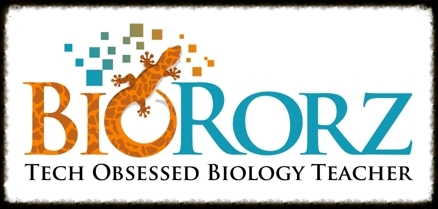LKWHQ: 21st Century Backwards Learning in Biology
Photo credit: http://bit.ly/WwBGVw
We are all familiar with the good old KWL chart otherwise known by my students as "Kills Will to Live" if I use it too often. As teachers, we use it to activate prior knowledge in our students as they prepare to learn new material. Recently there has been an upgrade to this chart to include the use of 21st Century Skills such as information fluency . Allow me to introduce KWHL or if you are really serious, KWHLAQ! Go big or go home!
What do we know? What do we want to learn? How will we find out? What have I learned? What action will I take? What new questions do I have?
In science, KWHLAQ is a good outline of design labs and some projects, but it can easily be applied across
other disciplines as well. In fact the 10th graders at my school do a
research project on controversial issues in history that culminates in an action based on their findings. This would be a perfect graphic organizer for this type of project. We have recently been looking for ways to infuse information fluency deliberately into what we do on a regular basis. This chart would be helpful for this purpose. At the very minimum, we all need to be making the shift from KWL to KWHL, while at the same time looking for opportunities to add the action component wherever possible. For a description of how this fits with PYP, check out this post incidentally written by the elementary school tech coordinator at ASB, Maggie Hos-McGrane. Teach Thought, one of my go to blogs, also wrote a post about KWHL that you should check out.
I would like to propose two other models: The first model I call LKWHAQ. A backwards by design for scientific research intended to help students understand the scientific process better by studying what those who have come before them have done.
The topic for class today: Sickle Cell Anemia.
Prior to class, students will preview a web documentary about the research led by Linus Pauling on Sickle Cell Anemia.
Step 1 (L): What do we know today about (insert topic) that we LEARNED from their collective research?
At the beginning of class, we will go over what we know about Sickle Cell Anemia with regards to the specific mutation, the mode of transmission, and the impact of malaria on the allele frequency of this disease. I will then give students an article published in 1949 by Linus Pauling.
Step 2 (K): Students will then summarize what they KNEW in 1949 and how they arrived at these conclusions. (Note that this paper was published four years before the structure of DNA was discovered by Watson and Crick. This is yet another rabbit hole you could enter.)
Step 3 (W): I will then provide them with a second somewhat controversial article with racist undertones characteristic of the social climate at the time entitled, Data Pertaining to the Population Dynamics of Sickle Cell Disease (truly a fascinating read if you know the background and understand the science): Students will then identify what the researchers WANTED TO LEARN? We will also discuss their hypothesis before digesting the data.
Step 4 (H): HOW DID THEY LEARN? This is a perfect place to address this question as electrophoresis technology had just entered the scene a couple of years prior to this research. Students will then discover how they gathered and analyzed their data. What were their challenges and limitations? We will also look at the bibliography to identify the research that formed their baseline knowledge.
Step 5 (A): We will then summarize and evaluate their conclusions based on what we know now about this disease. Are they moving in the right direction? What pieces are still missing? What would they need to do to arrive at the conclusions that shaped our understanding of sickle cell anemia today? What technology is needed? I will introduce a third article entitled Population Dynamics of the Sickle Cell Trait in the Black Caribs of British Honduras, Central America. With this we will discuss additional research done based on the findings of earlier research. Their ACTION component.
Step 6 (Q): Since our research brought us up to the early sixties, we will IDENTIFY THE QUESTIONS that still remained based on our current knowledge and match this knowledge to the introduction of new technologies that would enable us to advance our learning on this subject.
This type of exploration is perfect for topics like genetics. Let's face it, today, we can find almost anything on the Internet. By starting with what we know today and then tracking the progress of the research that brought us to these conclusions, my students will have the opportunity to observe science in its purest form and track the formation of ideas and concepts that we "know to be true" today. They will discover how the technology available at the time of research determined (limited) the extent of our knowledge, and then ponder the potential impact that future discoveries will have on our current knowledge base. They will also be able to discover how the social and political climate can influence the research conducted bringing about bias as a limiting factor.
At the very least, this is a much more interesting than simply memorizing the fact that a single base substitution mutation causes valine to replace glutamic acid in the beta chain of hemoglobin resulting in the sickling of cells in low oxygen pressure conditions. Sometimes keeping it simple is just not the way to go.
This post is already too long, so I will leave you with a teaser for my second proposed KWL adaptation. This morning I watched a very provocative TEDxLondon talk called the Problem Finders. Check it out and see if you can guess my new acronym.


